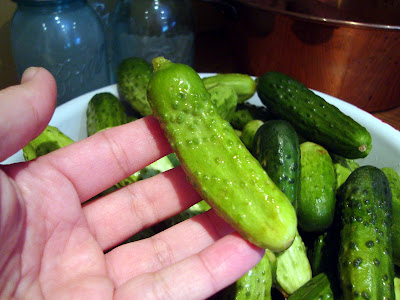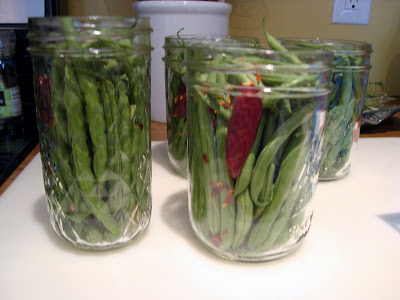While the information in this post is factual to the best of my knowledge, any opinions are completely my own.
This post is a little different from my usual, but I wanted to share pictures from a farm tour I recently went on thanks to a workshop called Ag in the Classroom sponsored by NC Farm Bureau. I was there Monday and Tuesday, and one of those days was spent at several of NC State University's Animal Science Education Units. These units are essentially working farms run in cooperation with the University and the Department of Agriculture, and they are open to public tours for the purposes of education. A lot of college students also work at them as part of the Animal Sciences curriculum. We visited the dairy, swine, and beef cattle units on our trip. They also have other units and you can read more about each one on this website.
Taking a visit to a farm is an eye opening experience, and it helps you see what goes into producing the foods we eat. Our first stop was the dairy farm unit. This unit had been recently renovated to include newer technologies to make the process of milking faster and more efficient.
The cows at this dairy are milked twice a day, and the technology used is amazing. When the cow steps up to be milked, the green area on the equipment in the picture reads the cow's number and logs information about the cow including how much milk she is producing at each milking, if all four udders are working properly, and how her milk production for that day compares to other days. Her milk then flows down to a device in a room underground that takes a sample of the milk and logs more information.
Obviously, with this being a working dairy, one of their primary goals is production. Because they want the cows' milk to sell, they remove calves from their mothers once they are born. The calves are housed in individual pens with little 'houses' attached to enable them to get out of the sun. I understood the reason for this, but part of me also felt bad for the calves who had to stay in these pens alone. This calf was born the day before we arrived.
Once the calves are old enough, they are housed in a much larger fenced area/barn where they have more room to roam.
The lactating cows are kept in another barn with an aisle where they can walk and rubber mats topped with bedding. They do have access to a field behind the barn, but during the summer they rarely choose to go out due to the heat. The barn where they are kept is cleaned twice a day.
The milk from these cows goes to a local processing plant and then to the university to be used. A portion of it also goes into making Howling Cow Ice Cream. They do give their cows antibiotics if absolutely necessary, but any milk from those cows is stored in another part of the dairy facility and is used to feed the calves rather than going into the milk that is sold and used.
I have been on a working dairy farm before, so nothing I saw surprised me that much, but the swine unit was a little more unnerving for me. The swine unit is meant to be a farrow to finish unit meaning the pigs are born there and raised to their slaughter weight there. Due to budget cuts, at this point, they are only raising the pigs until they are old enough to be weaned at which point they are sold to other farms as feeder pigs.
The sows are kept in a constant state of some form of reproduction. There are a variety of buildings at this unit and each serves a different purpose. There is a building where the breeding takes place, one for gestation, one for birthing, and one for holding the sows until the piglets are weaned. The sows get very little room for movement in these stalls. As you can see below, the sow remains on her side for a good portion of her time in these stalls so that her pigs can feed. She is surrounded by metal bars that restrict her movement to a great extent.
She can stand up in the stall, but she cannot move from left to right.
The piglets have a little more freedom of movement as they are able to roam within the confines of the entire stall, but that is still not much room. They are kept in this stall continuously until they are old enough to be weaned and removed from their mother.
The sows remain in the stalls or stalls similar to these throughout their lifespans. The only form of exercise they get is the walk between various buildings as they are moved through the reproduction process. We were at this farm on Tuesday, and these piglets were scheduled to be weaned on Thursday. Several days after weaning, the sows will be taken to the breeding barn to begin the process all over again. There were sows in the building we visited that had given birth to up to ten litters in their lives meaning that they have been years in these stalls doing these same things on a daily basis.
One thing that was stressed to us throughout this trip was that agricultural practices need to be approached from different perspectives. I realize that we have to produce more food with less land than ever before, and when the demand for a product is as high as it is for meat in this country, practices like this are the most efficient at producing in high quantities, but I can't help but think of the animals and what they should be doing according to nature. I know I wouldn't want to have the life of the sow remaining in a confined space for years on end. I would want to move freely, root around in the dirt, and raise my litter as nature intended. There are many farms out there that allow their pigs to do just that. Yes, they are usually smaller in scale but they are raising their pigs in a way that makes the pigs comfortable in a more natural setting. I know we can't rely on small farms to feed us the amounts of meat that we consume in this country, but it makes me realize that I want to consume less in order to consume better.
We also visited the beef unit, but we were not able to see the steers up close as they were all out in the fields grazing (as they should be). At the beef unit, the cattle are not fed grains but are raised on acres of pasture where they feed. At the beef unit, we were given a glimpse of a homemade chicken tractor and rabbit tractor made from chicken wire and pvc pipe. They would be very easy to make at home for anyone raising chickens or rabbits and are meant to be moved from place to place daily to provide fresh grass for the animals to forage.
The picture above is of the chickens in their tractor, and the one below is of one of the bunnies hanging out in the rabbit tractor. Raising rabbits would be very easy to do even for people who cannot own chickens due to city/county laws since rabbits are considered pets rather than livestock in most cities.
All-in-all, this trip was very informative and made me think even more about the foods I eat. While the facilities where clean and the animals well taken care of everywhere we went, it did make me think about industrial agricultural practices and what we do to produce food, and I think that is something we all need to be thinking about.


































